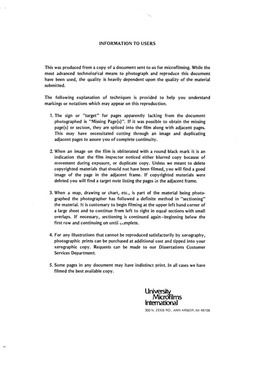| dc.description.abstract | A novelist's success depends a great deal on the reader's memory. Although a work of fiction must tell its own story, the use of structural patterns and devices found in previous and contemporary works can be used by a novelist to expand the meaning of his work and to guide the reader toward an intended response. Emily Bronte, Charles Dickens, and Henry James use the gothic metaphor found in late eighteenth and early nineteenth-century literature as the basic patterns for their characters' confrontations with the past as they attempt to realize their ambitions. The expressed attitude toward the past in Wuthering Heights, Great Expectations, and Portrait of a Lady is strong ambivalence, a central tension in Victorian literature as the age was not quite certain what should be done with the past. The representative characters--Heathcliff in Wuthering Heights, Pip in Great Expectations, and Isabel in The Portrait of a Lady--, fail in their respective attempts to establish satisfactory relationships with the past, a failure that can be traced to their misinterpretation of the past and their naivete about the powerful role money plays in social relationships. Using the gothic structure, the novelists guide the reader through the hopes, fears, and errors of the three characters until he arrives at their final acquiescence. The similarities of the three novels are striking and bear likeness to other nineteenth-century novels as well as to the fiction of William Faulkner, supporting the assertion that there is a definite agreement among authors about the meaning and usefulness of the gothic metaphor in presenting typical experience based on the conflict the present has when dealing with the not-quite-dead past. From the works illustrating this unstated agreement, it is possible to arive at a useful definition of gothic and to understand its separateness from the terms grotesque and science fiction, a difference based on past, present, and future. All three types of fiction are modes of presentation that are Romantic in nature as they deal with key questions of the individual's relationship to time in his orientation to the world. The gothic presentation of the orientation of the individual to the past as presented in the three Victorian novels primary to this study evokes a response of acquiescence in the reader that is very nearly the same response exhibited by the main characters. The near likeness of response is possible because the extended experience of a novel gives a reader and a main character much of the same memory from which to respond. | en_US |
